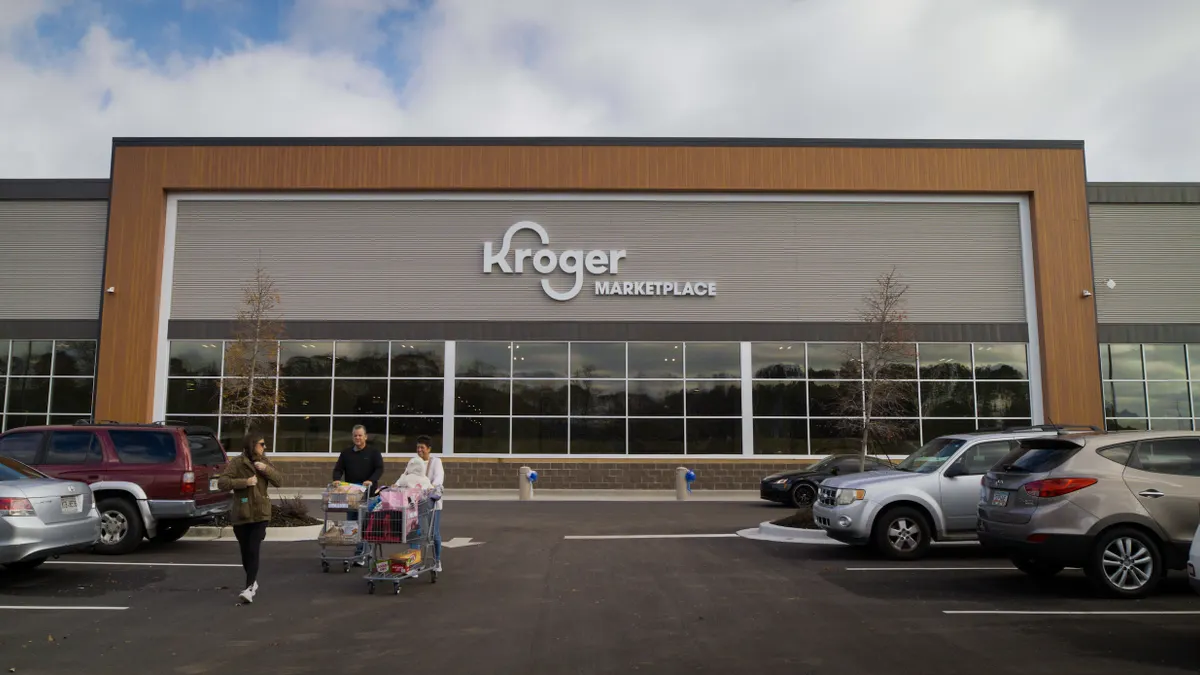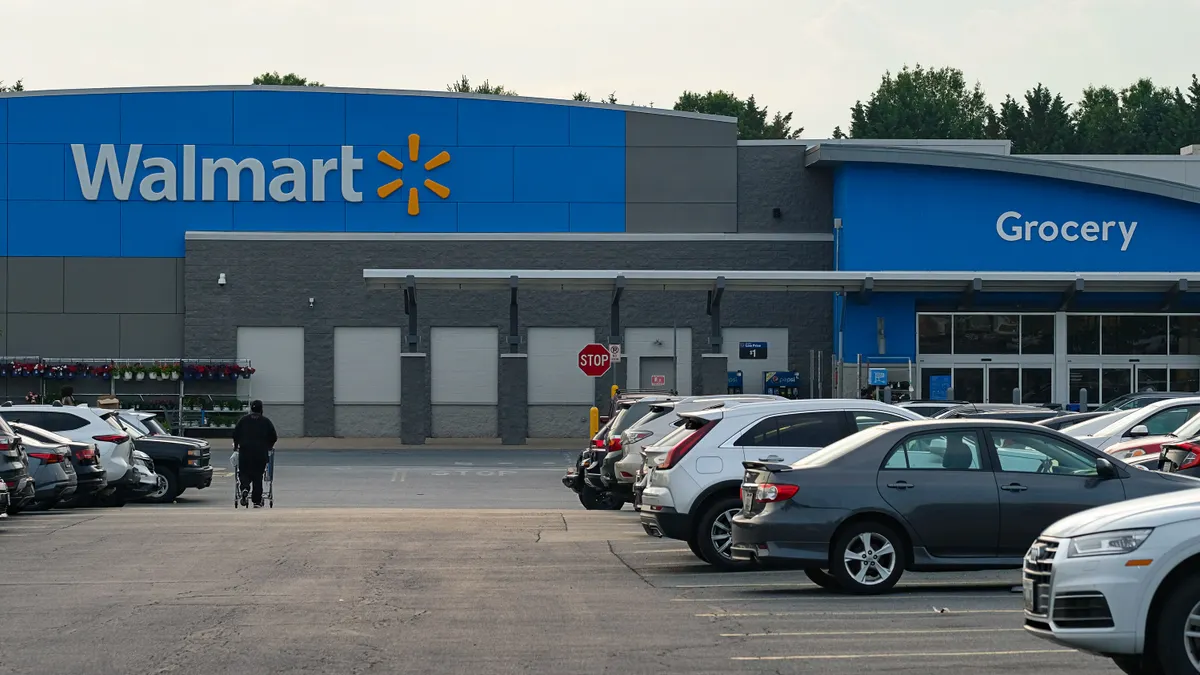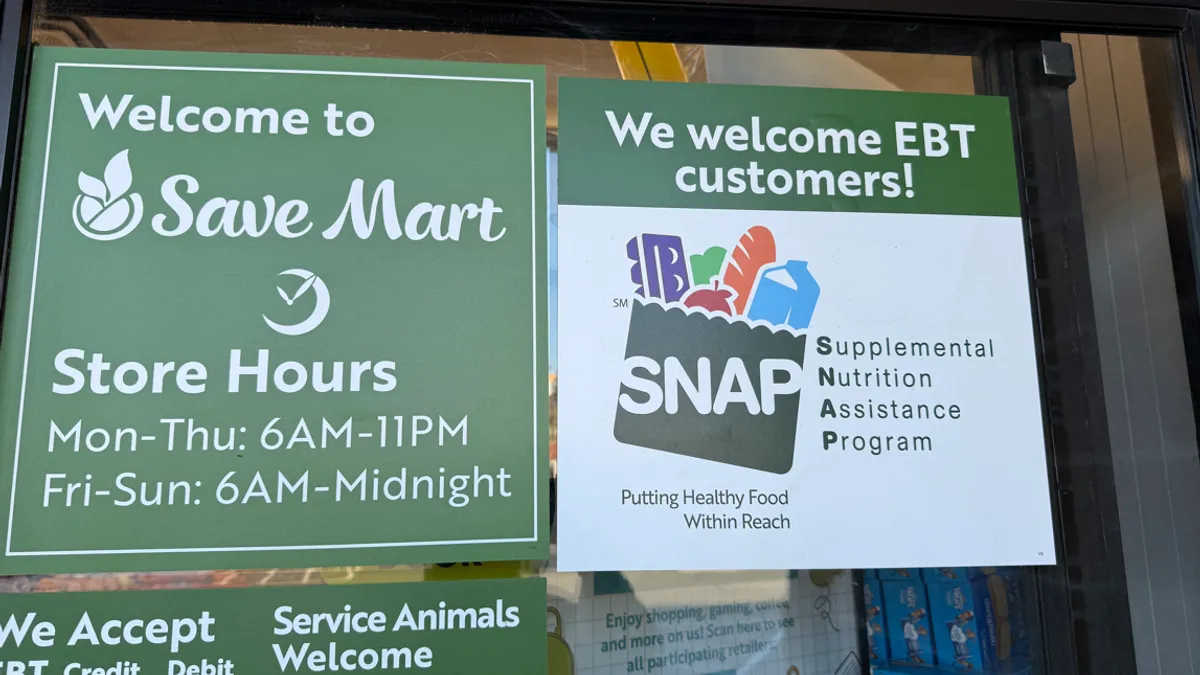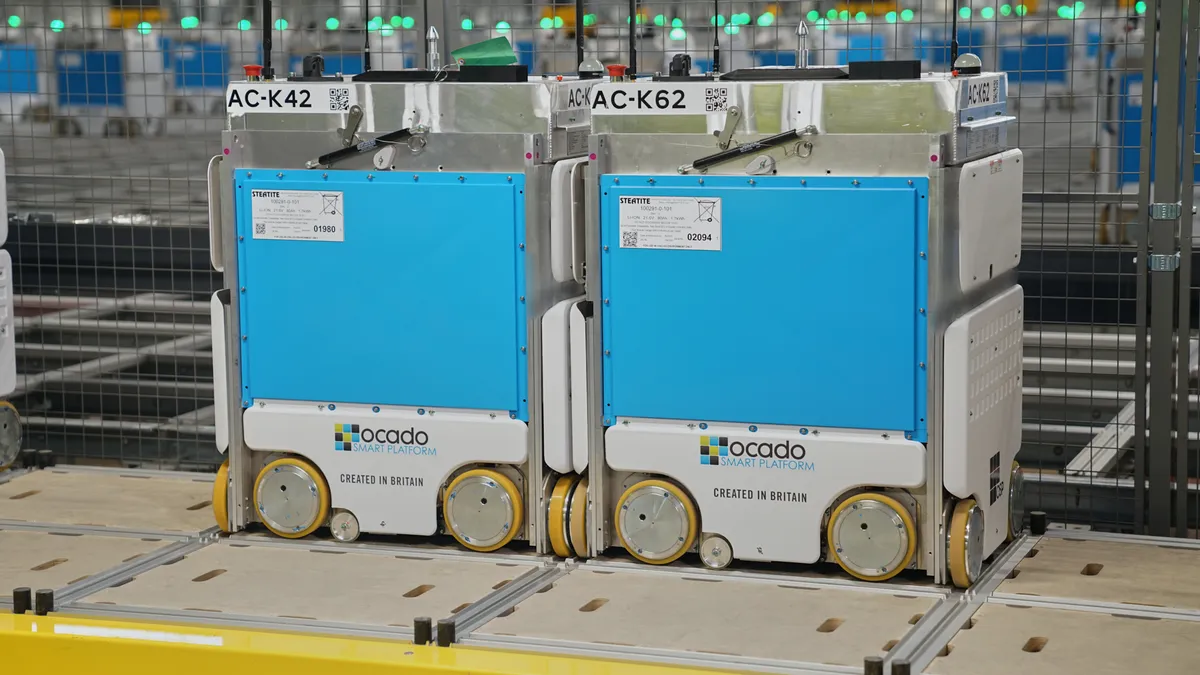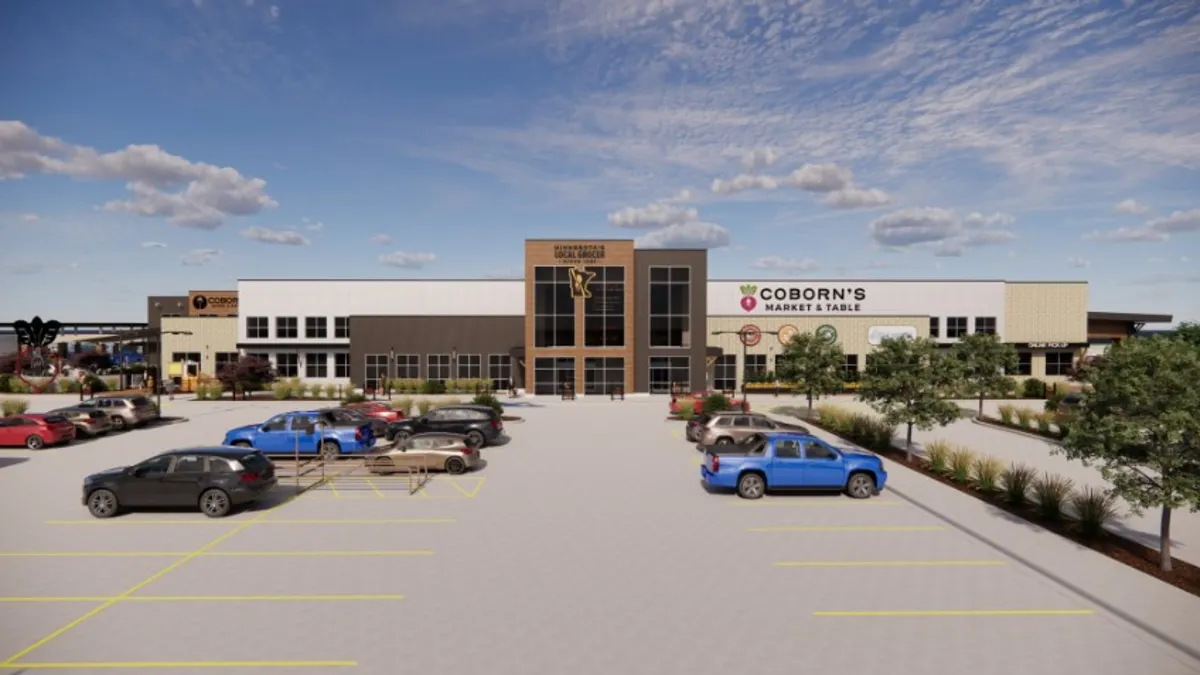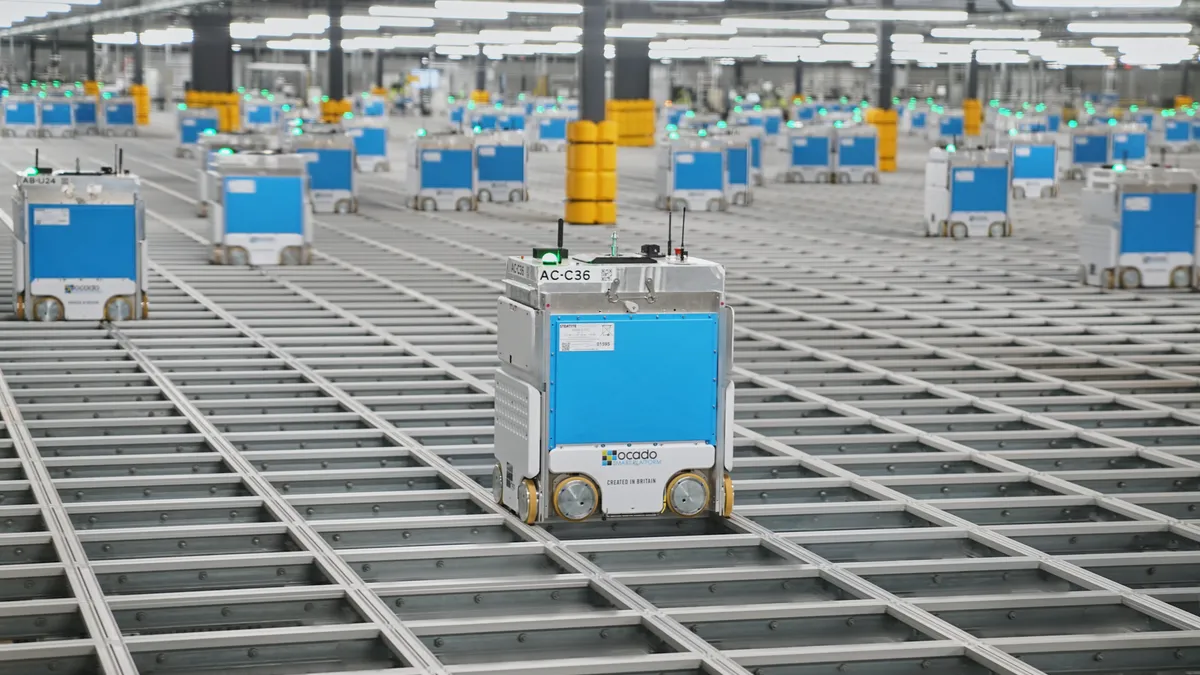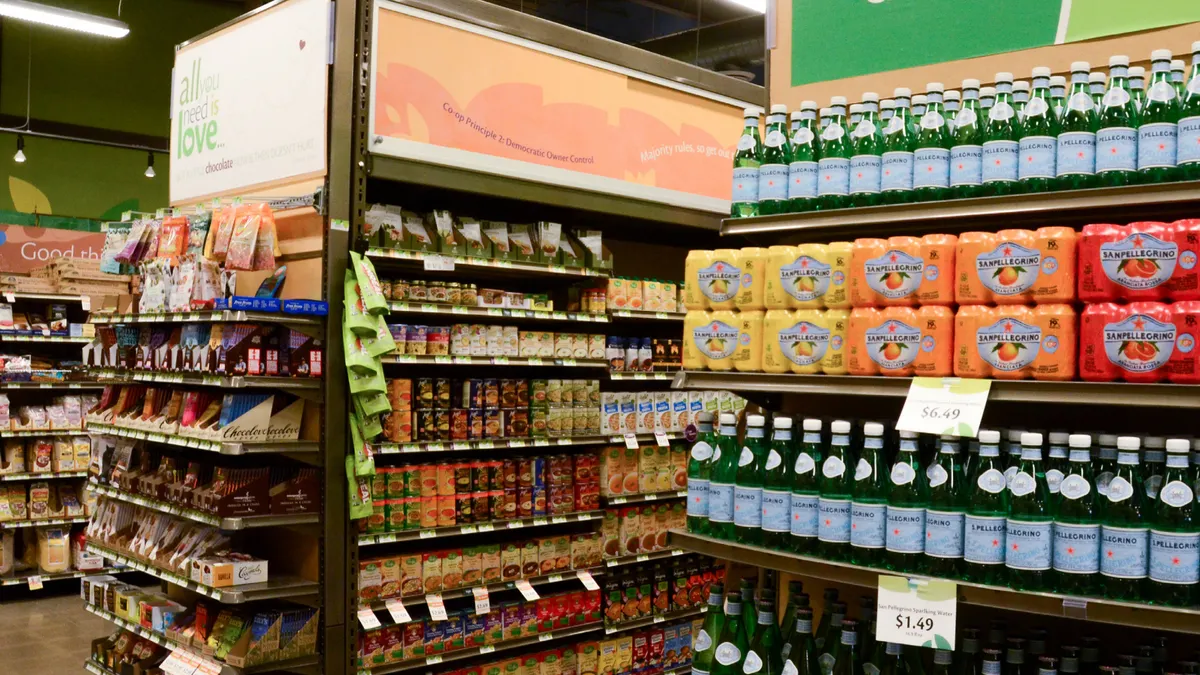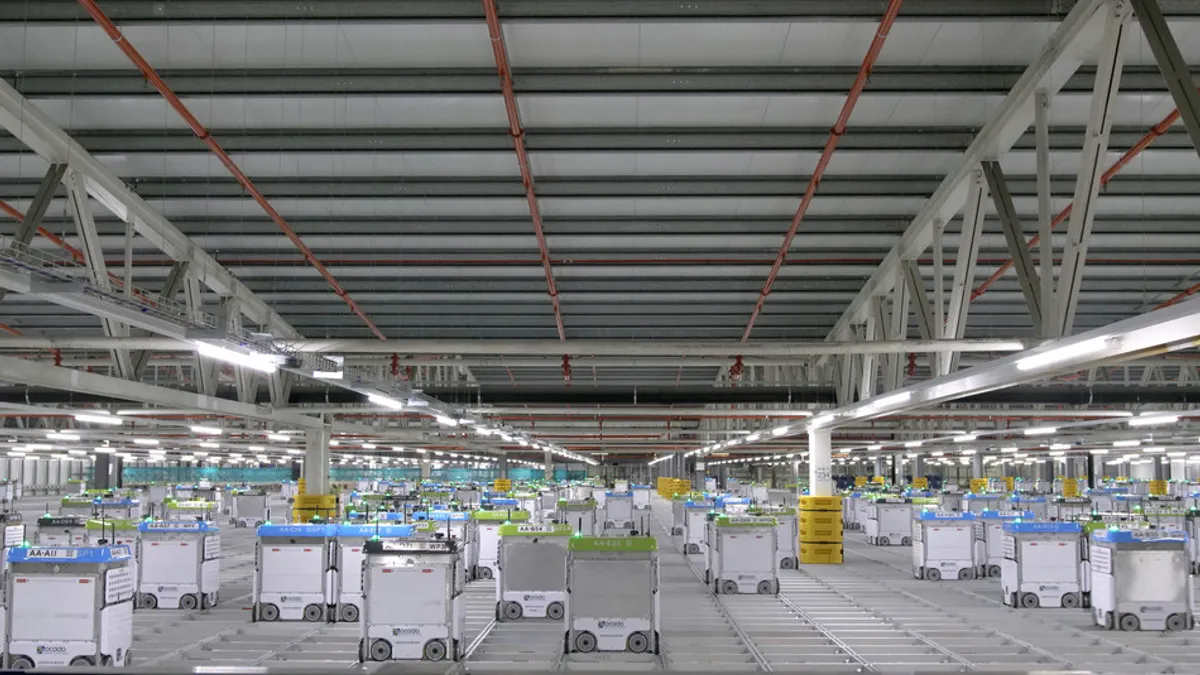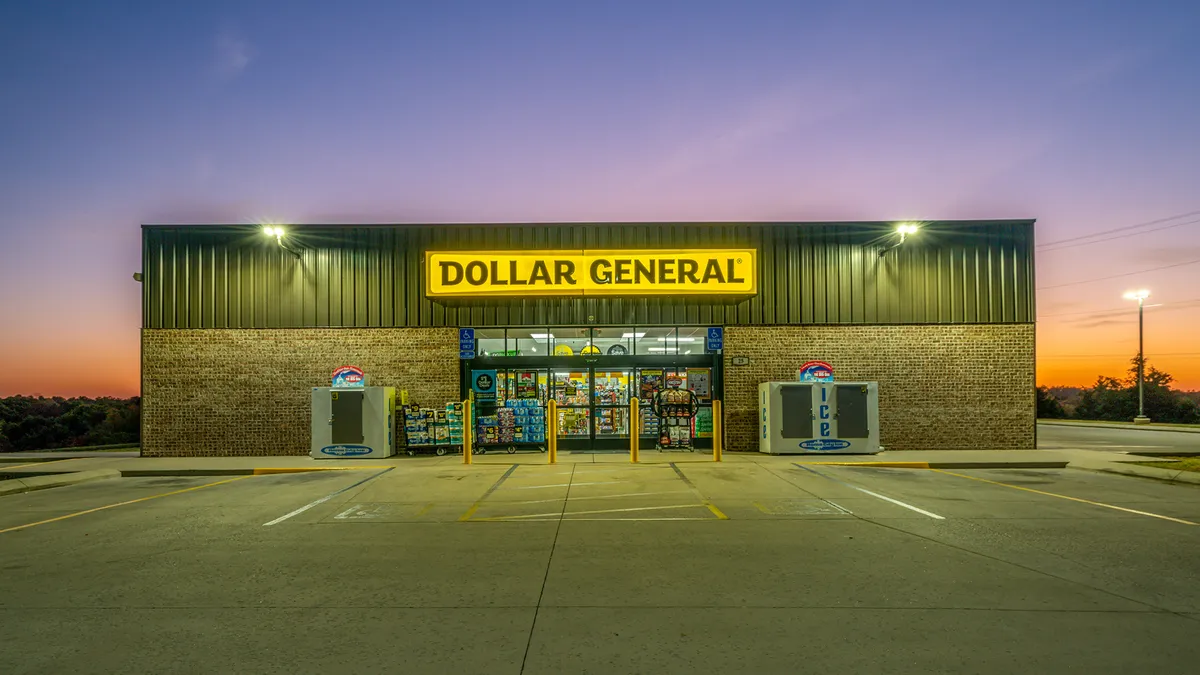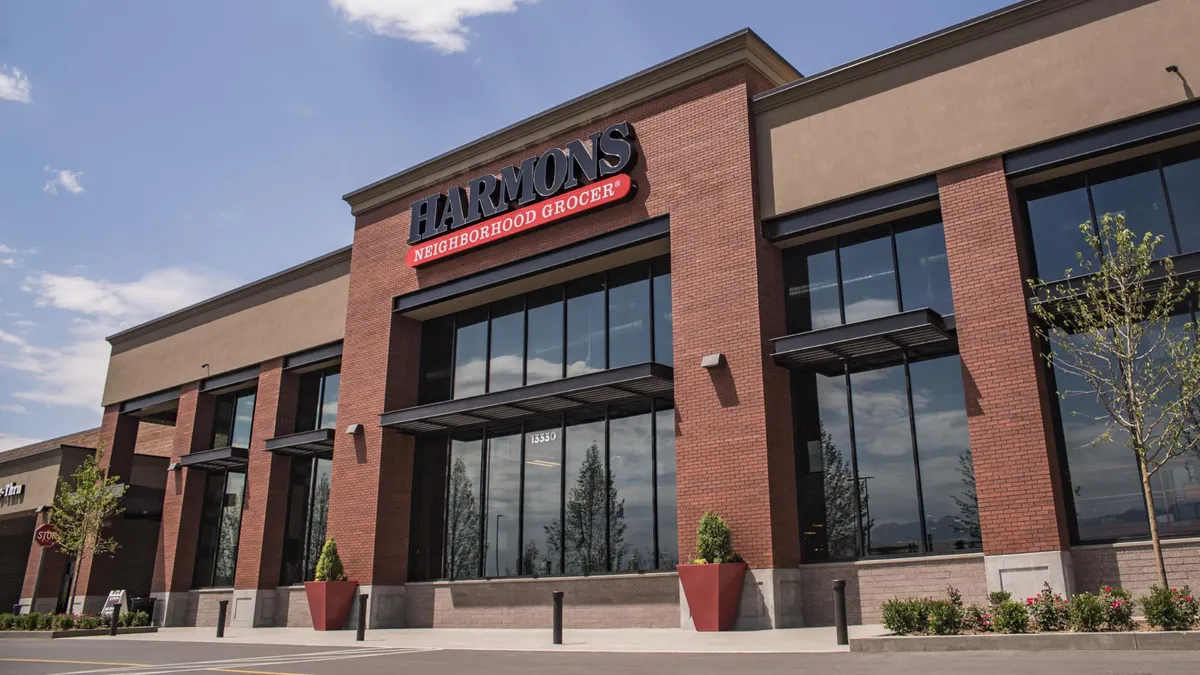Pardon the Disruption is a column that looks at the forces shaping food retail.
When I was a kid, my family moved back and forth between the cities of Louisville and Lexington, Kentucky, meaning I grew up with a deep appreciation for college hoops and horse racing. It also means I was never very far from a Kroger supermarket.
The Bluegrass State’s two largest metropolitan areas are indeed “Kroger Country,” as Supermarket News put it 15 years ago. It seemed like every neighborhood had a store. And all the sports facilities, from my Little League field to Rupp Arena, where the University of Kentucky Wildcats play basketball, had Kroger signs. In 2017, the college football stadium I walked to on so many game days was renamed Kroger Field.
This summer, I went back to Kentucky to visit with friends and see places I hadn’t seen in years. Amid all the sightseeing, backyard barbecues and revisiting childhood memories, I couldn’t help but notice that Kroger had some very noticeable new competition. Is Kroger Country becoming Publix Country?
As the nation’s largest supermarket chain works to get its business back on track following its failed merger with Albertsons, one of the biggest threats it faces is a slew of high-performing, fast-growing regional grocers. In Kentucky, Publix has quickly opened several stores in less than two years and has many more locations on the way.
In Texas, where Kroger operates hundreds of stores, H-E-B is marching into the Dallas-Fort Worth market, which for years has been a Kroger stronghold. Shift over to the Mid-Atlantic region — a critical region for Kroger and its Harris Teeter banner — and you can see Wegmans making its way south from its home turf of New York State like an invading army.
These super-regional grocers are redrawing the competitive lines in the grocery industry as they expand and evolve. They’re making life tough for Kroger. But I give Kroger credit, because the grocer seems to have a focused game plan centered on one particular type of store format.
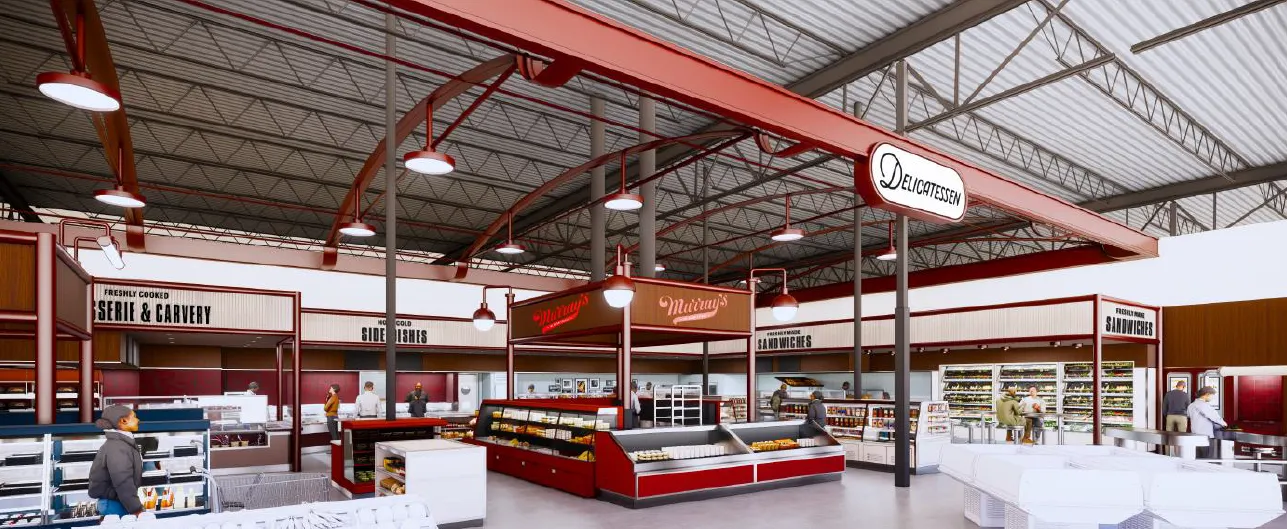
A Marketplace of ideas
Kroger Marketplace is not a new store concept, but it’s one that’s getting a lot of attention from the company these days. Even as the grocer has closed dozens of stores, Kroger is remodeling and opening locations under the supersized format.
Looking through local news stories over the past year, I counted more than 20 Marketplace stores that had opened this year or are currently in the company’s pipeline. Most of them are located in markets where super-regional competitors pose a threat. In the Dallas-Fort Worth market, Kroger plans to spend $160 million to open four Marketplace stores. In Kentucky, several Marketplace store openings and remodels have recently been completed or are in the works.
Kroger sees the Marketplace store model as its prize fighter in key regional battlegrounds. But does the format have what it takes to push back on Publix and wrangle Wegmans?
One advantage Kroger has is the more than two decades it’s spent developing and honing Marketplaces. The format originated in the Southwest, where a redesign of a large Fry’s store in Phoenix led to a supercenter concept where groceries and lifestyle products like grills, kitchen supplies and pool equipment were all tastefully merchandised under the same roof, said Kevin Kelley, co-founder of the design firm Shook Kelley, who helped develop the first Marketplace store.
“We were trying to think about it like a village that you got a lot done in,” he told me. “You could really have a great pharmacy experience. You can have a grocery experience. We were really pumping up the center store, pool and patio [departments]. We were creating solutions.”
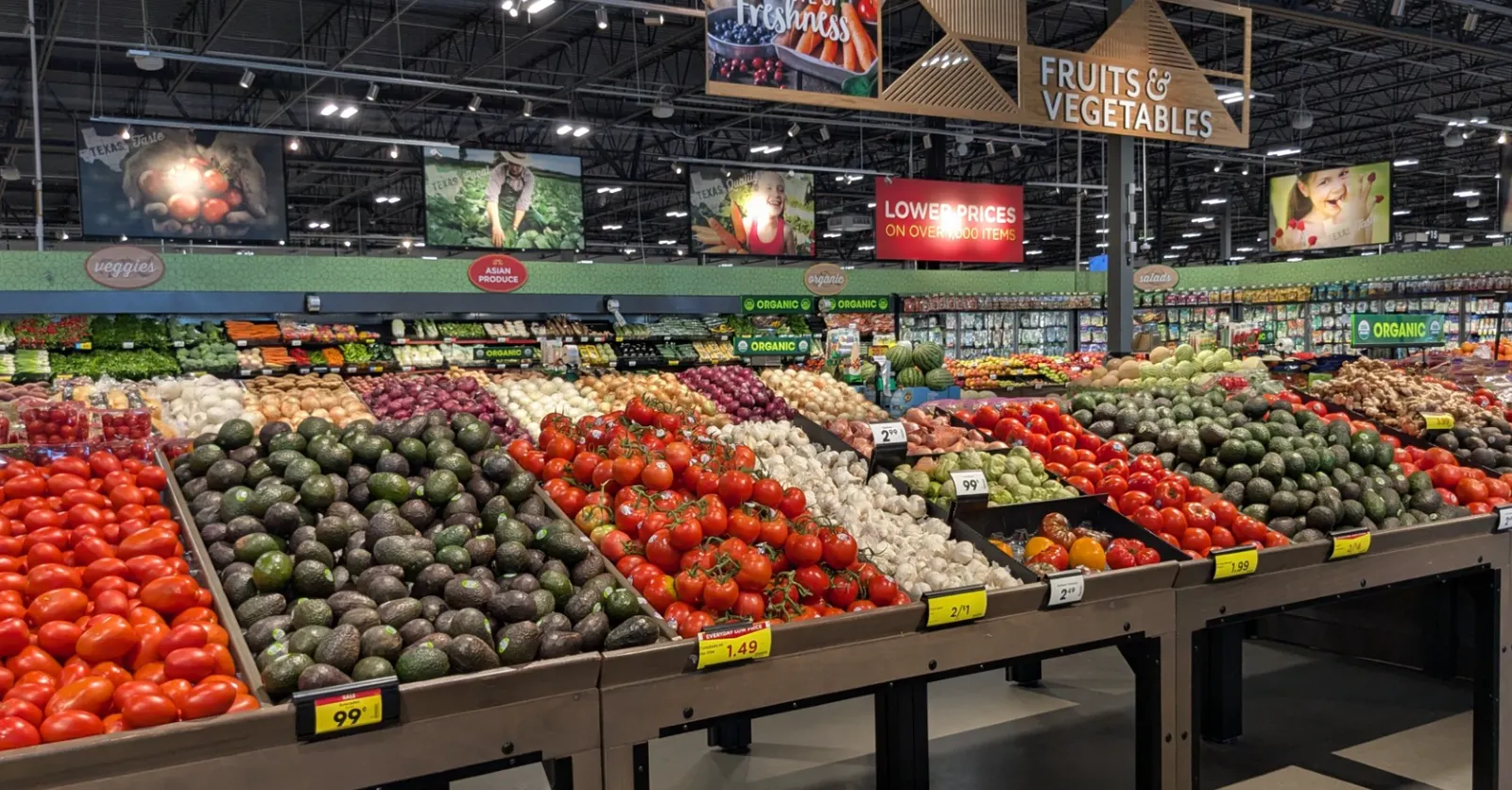
The Marketplace format would go on to ride the same wave of demand for large, multidepartment shopping that lifted Target, Meijer and Walmart. After proving the concept in Arizona in the early 2000s, Kroger brought the Marketplace concept to Texas, Kentucky, Ohio and other states.
Marketplace’s growth has been steady if unspectacular, and the company puts surprisingly little effort into promoting it outside of slapping the name on the outside of stores and in news announcements. In researching this story, I really had to dig around for any information about Marketplace’s history. And I couldn’t locate an updated store count or find an executive discussing the concept. A Kroger spokesperson didn’t respond to my request for an interview or further information.
The most recent store count I could find came from 2019, where Kroger noted in a press release that it had more than 200 Marketplace stores.
Now is a good time for Kroger to really embrace Marketplace. Its years of work have resulted in a store model that looks really sharp. Pictures of recently opened locations posted on LinkedIn show off spacious retail floors with modern-looking displays and signage, creatively themed endcaps and standalone displays, and a bevy of meal options.
Stewart Samuel, director of retail futures at IGD, recently visited a new Marketplace store in Plano, Texas, and came away impressed. The produce department felt modern and vibrant, and the movement between grocery and nonfood departments was fluid, he said. The generous size of the store means there’s plenty of space for e-commerce fulfillment, something Kroger is increasingly focused on.
“I think this really hits a sweet spot for them,” Samuel told me.
Kroger clearly wants to continue improving its Marketplace stores. It’s testing out innovations like a 6,500-square-foot “deli of the future,” which debuted inside a recently opened Kentucky location, and an expanded assortment of Asian products, which will headline two stores in Texas the grocer is remodeling.
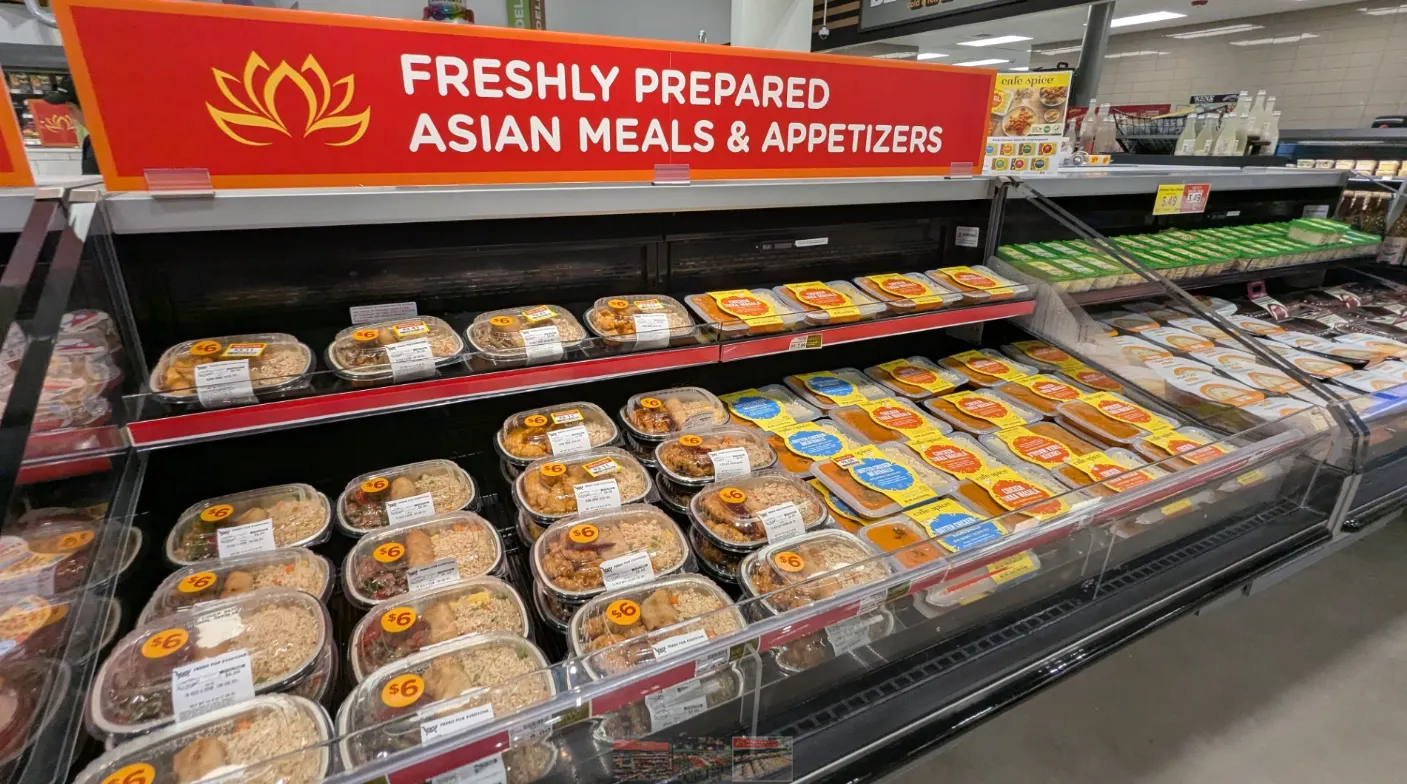
Making it a destination
I think Kroger is trying to fashion Marketplace into a destination shopping experience — a store that not only defends against regional players as well as ascendant club and specialty competitors, but that also plays offense by offering unique, you-gotta-be-here shopping features.
Why else would the supermarket chain be putting so much muscle behind stores that are roughly twice the size of its conventional stores? How else to explain the development of loftily named departments like “deli of the future” and “Asian experience”?
Kelley told me he also believes Kroger is positioning Marketplace as its showcase store of the future.
“There’s this sense that this is their horse they’re betting on,” he said, using an analogy I certainly appreciate.
I asked Kelley, who has toured numerous Marketplace stores in the years since he helped start the concept, to rate Kroger’s progress so far. He gave a mixed evaluation. The Marketplaces he’s been in are laid out well but offer an inconsistent experience. He’s noticed some locations have cafes while others don’t. The main exterior logo varies from one location to the next, while endcaps seem well-executed in some stores and slapped together in others. The stores feature a lot of signage about low prices, fresh foods, local products and more — but they don’t add up to a unified identity for Marketplace, Kelley said.
Wegmans, Publix and H-E-B all have clear value propositions. Figuring out a value proposition is work Kroger still needs to do with its Marketplace format, Kelley noted.
“I wish they had one thing they really stood for as you go through the stores. Hit me with gourmet, hit me with value presentation — hit me with something,” he said.
I visited a Kroger Marketplace during my family’s stay in Louisville, Kentucky, and came away with a similar impression. The store was clean and well-appointed, but it just felt like a larger version of a Kroger supermarket. Nothing felt new or urgent, and navigating it reminded me why I often avoid shopping at large stores. What I’d hoped would be a quick trip for bottled water and a bag of chips turned into a multi-aisle odyssey.
That said, I think Kroger is smart to level up its Marketplace format. These large stores are full of possibilities, and Kroger has a history of trying out new things in its stores, from ghost kitchens to food halls. Innovations like a futuristic deli and an expanded international assortment probably won’t make super regional grocers blink, but they will help Kroger differentiate itself from Walmart, Costco and discount chains.
Thinking back on my visit to that Marketplace store in Louisville, I can’t help but imagine a store that leans on Kroger’s strengths to differentiate, including private label, digital shopping and fresh products. If the grocer can embrace Marketplace as a unique shopping experience and not just as a supersized Kroger, it could greatly improve the company’s fortunes.


